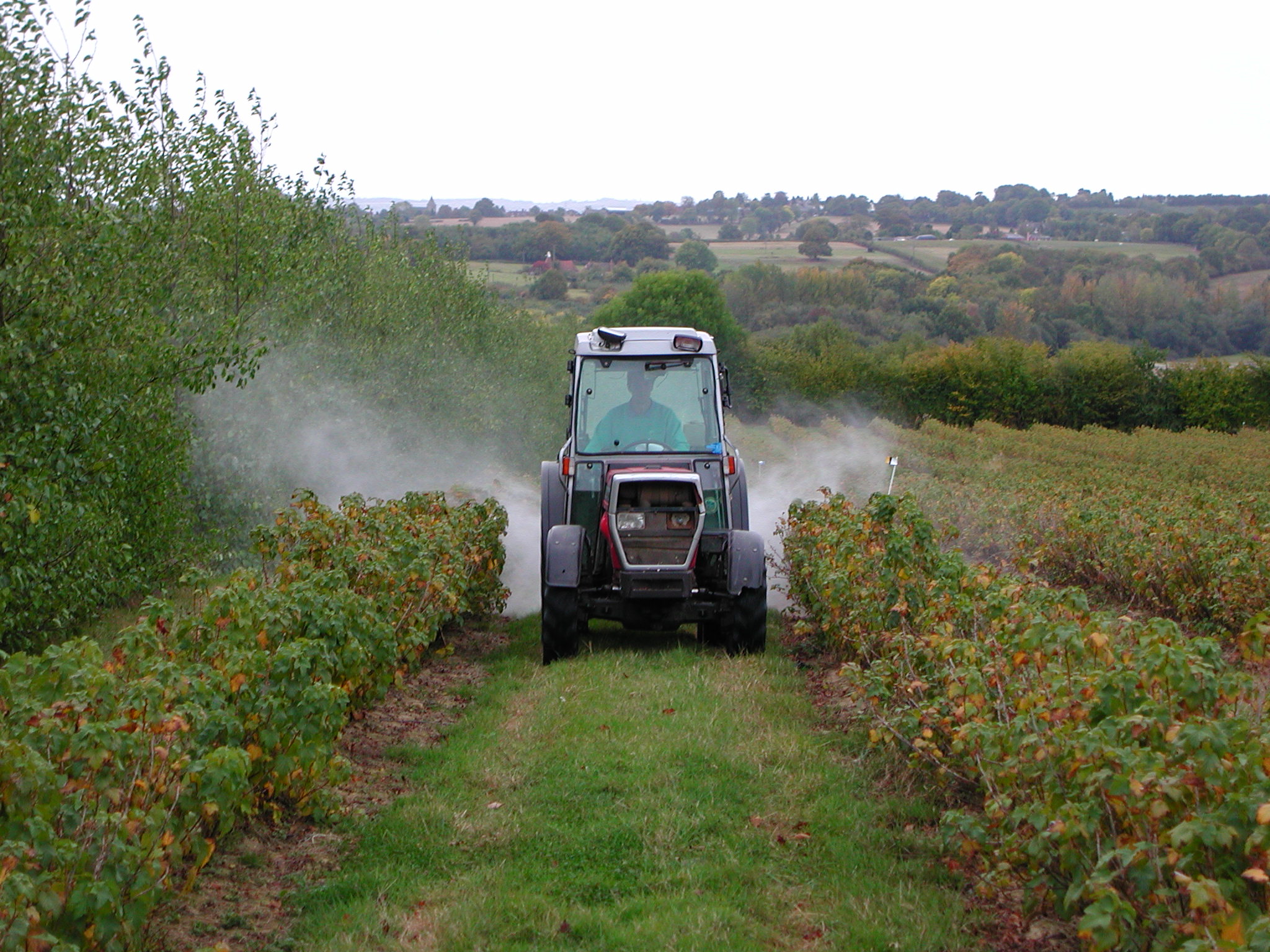Please click here to access the main AHDB website and other sectors.
- Home
- Knowledge library
- Botrytis in blackcurrant: timing of fungicide sprays
Botrytis in blackcurrant: timing of fungicide sprays
Read guidance on the key times to apply fungicides to control Botrytis in blackcurrant
Return to the main page: Developing novel biocontrol methods for pests and disease in blackcurrant
Timing of fungicide sprays: the trials
Field trials on the varieties Ben Hope and Ben Tirran were conducted over four years to assess the use of a range of fungicides and biocontrol agents (BCAs) to control botrytis.
Figure 1: A range of fungicide and biocontrol agents were assessed in trials for Botrytis control
Initial work compared the use of standard fungicide programmes during flowering with BCAs, including Serenade ASO, Prestop, Trianum P and Boniprotect Forte.
Programmes based on three sprays of a traditional fungicide followed by one, two or no sprays of Serenade ASO were also included.
Higher incidence
Contrary to commercial experience in the field, Ben Tirran showed a higher incidence of botrytis development than Ben Hope.
In Ben Tirran, all treatments, including the BCAs, significantly reduced the incidence of botrytis rot in post-harvest tests compared to the untreated.
Best control was achieved by the traditional fungicide programme and a programme using three early fungicide sprays followed by two late sprays of Serenade ASO.
The incidence of botrytis was much lower in Ben Hope, but the best control of Botrytis was achieved by the standard fungicide programme, which used a series of fungicides including Bravo 500 (chlorothalonil)*, Teldor (fenhexamid), Switch (cyprodinil + fludioxonil) and Signum (boscalid + pyraclostrobin) from first flower.
*this product has now been withdrawn
Flowering spray
Subsequent trials further examined the use of BCAs alone, or in combination with traditional fungicides.
A new coded fungicide product from Bayer (UKA 386a – a Qoi and SDHI co-formulation) was also evaluated as a flowering spray.
The incidence of Botrytis was negligible on the fruit of both varieties pre-harvest, but in post-harvest tests, the incidence was much higher in Ben Tirran.
However, on Ben Tirran, none of the treatments worked apart from UKA 386a, which reduced fruit rot from 34% to 5%.
In contrast to the previous trial, there was no advantage in substituting the fourth fungicide spray with one or two sprays of Serenade ASO.
No advantage
On Ben Hope, all treatments reduced botrytis compared to the untreated, but only the fungicide-based programmes were significant.
The best treatments (three or four x UK 386a) reduced Botrytis from 13.2% to 0.5%.
There was no advantage of substituting the fourth spray with one or two sprays of Serenade.
The final trials evaluated elicitors (natural compounds that stimulate resistance mechanisms and increase host resistance to diseases) as an alternative approach to BCAs.
Untreated plots
The efficacy of various elicitors (Cropbiolife, Pretect, potassium phosphite) was compared to a standard fungicide programme, UKA 386a and Serenade ASO.
The incidence of Botrytis in post-harvest tests on Ben Hope was negligible and sporadic, with only 1.5% rot recorded on fruit from untreated plots.
None of the treatments had any significant effect on botrytis incidence.
By contrast, the incidence of Botrytis rot in Ben Tirran was relatively high, with over 36% rot recorded in fruit from untreated plots.
- The most effective treatment was UKA386a.
Cropbiolife applied as a three or five-spray programme, was as effective in reducing botrytis as the standard fungicide programme.
None of the other elicitors applied were effective in reducing botrytis fruit rot.
Conclusions
- The novel fungicide UK 386a is a very promising new product for Botrytis control in blackcurrant.
- The first three fungicide sprays are essential for good control and there is no significant advantage from additional pre-harvest sprays.
- BCAs were effective in reducing botrytis in the first trial, but failed to give control in the later trials
- This confirms previous results and emphasises the unreliable performance of such products when used in the same way as conventional fungicides.
- BCAs tend to be more costly than traditional fungicides and are currently uneconomical to use on blackcurrants. More work is needed to understand how best to use BCAs.
- Elicitors such as Cropbiolife offer an alternative approach, but further work is needed to establish timing and rate and consistency of performance.
Useful links
AHDB funded research into blackcurrant botrytis control
Evaluation of fungicides for the control of Botrytis
Developing traps and thresholds for blackcurrant sawfly
Read the biocontrol in soft fruit guide
Download the bush fruit crop walkers' guide
Authors
These pages were originally authored by Michelle Fountain, Angela Berrie and Scott Raffle (NIAB) in 2015.
Disclaimer
Please note that this information was last updated in 2015, so some of the plant protection products mentioned may be out of date. Biocidal and plant protection products must only be used in accordance with the authorised conditions of use. Regular changes occur in the authorisation status of biocides and plant protection products. For the most up to date information, please check with your professional supplier, BASIS registered adviser or the Chemical Regulation Division (CRD) of HSE (https://www.hse.gov.uk/crd/) before use.
While the Agriculture and Horticulture Development Board seeks to ensure that the information outlined on this page is accurate at the time of publishing, no warranty is given in respect thereof and, to the maximum extent permitted by law the Agriculture and Horticulture Development Board accepts no liability for loss, damage or injury howsoever caused (including that caused by negligence) or suffered directly or indirectly in relation to information and opinions contained in or omitted from this information.


